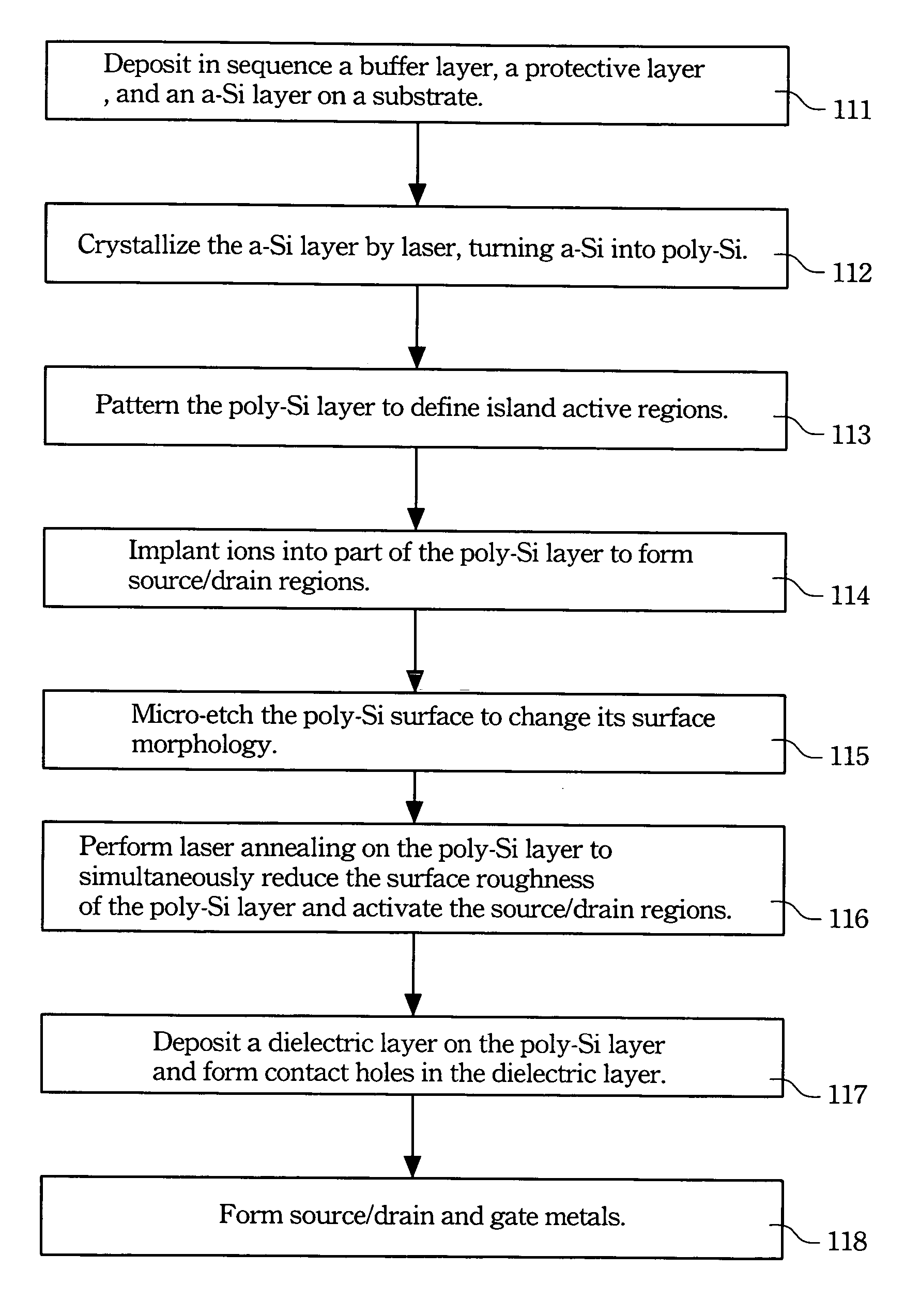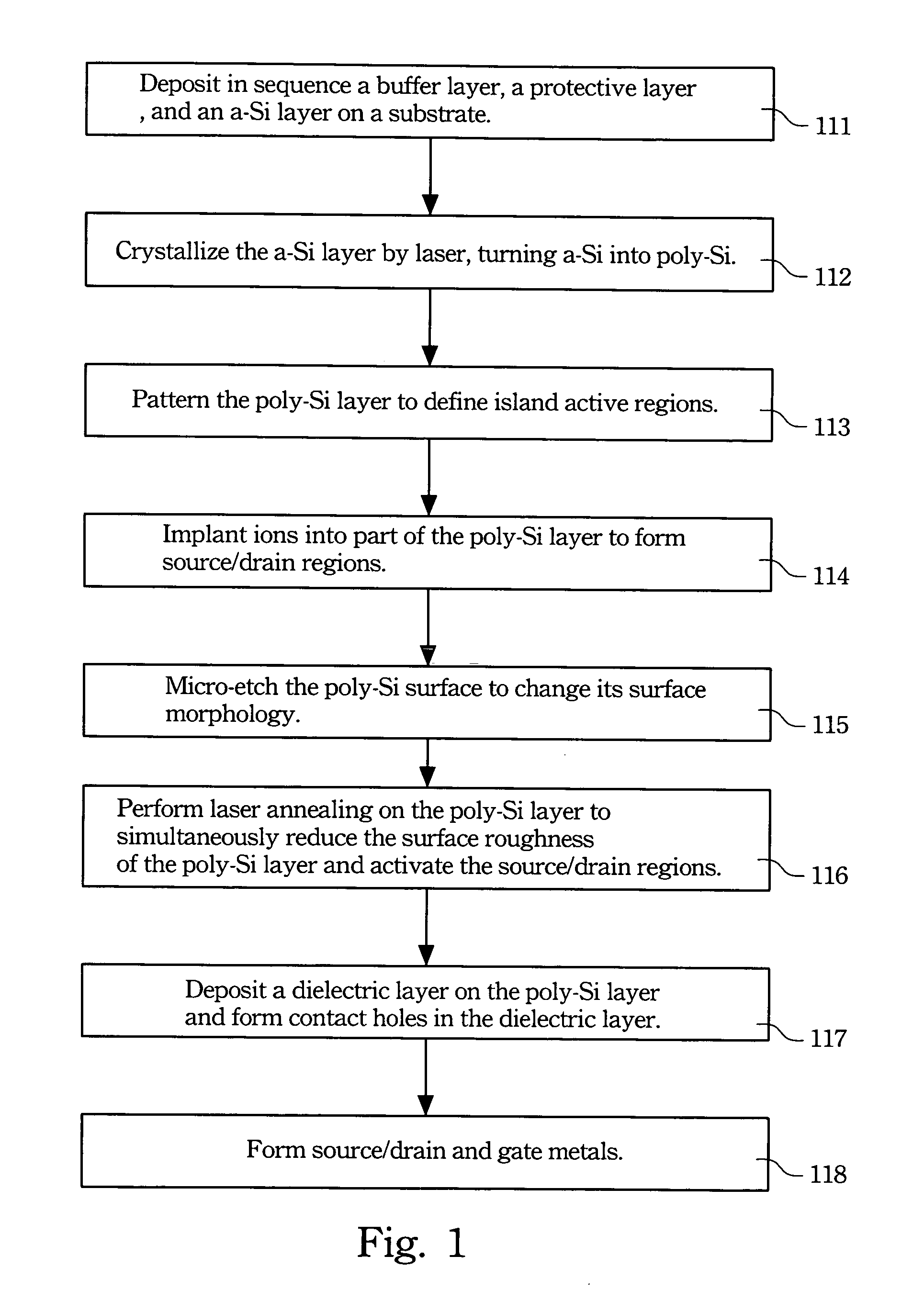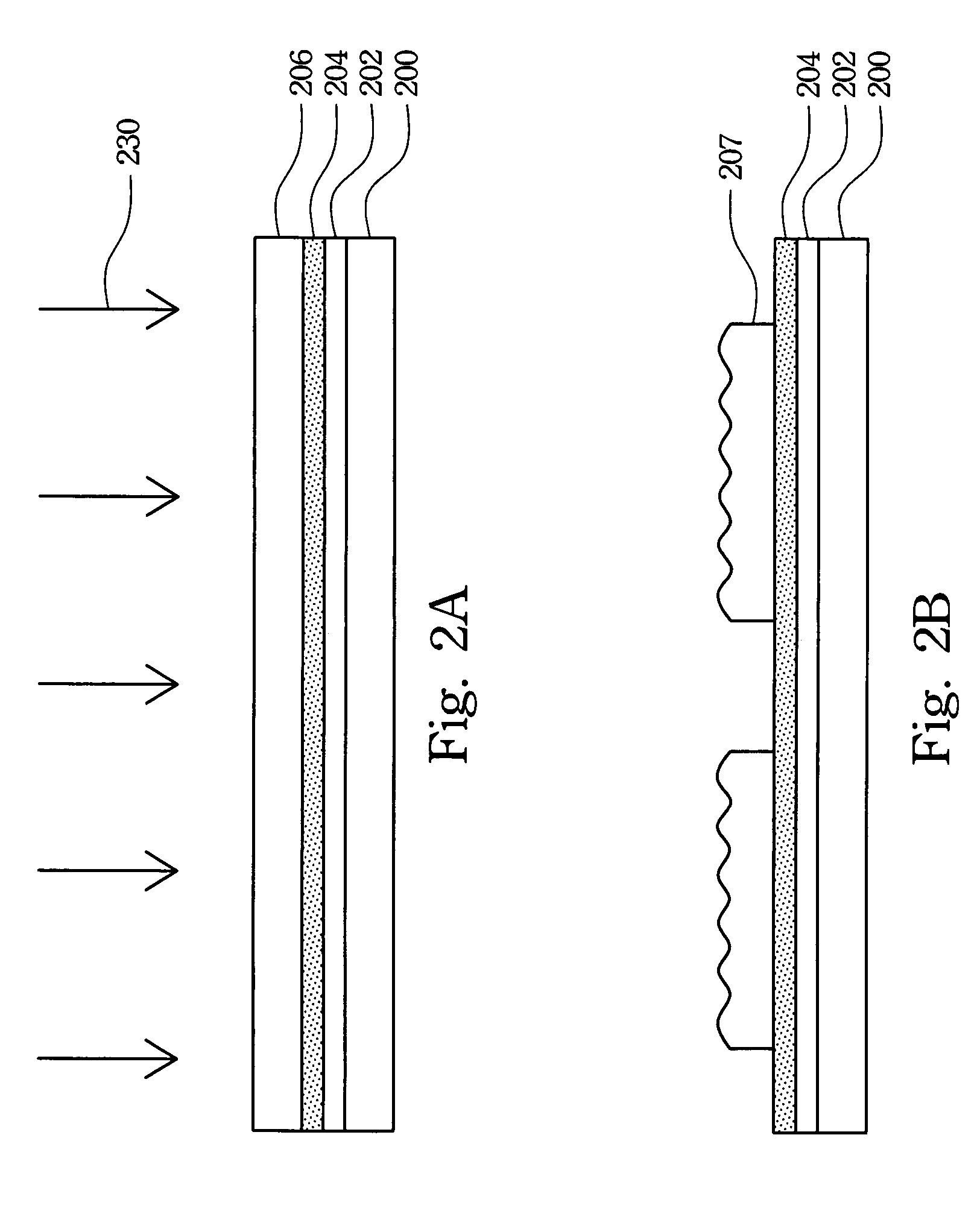Method of fabricating planarized poly-silicon thin film transistors
a thin film transistor and polysilicon technology, applied in the direction of basic electric elements, electrical apparatus, semiconductor devices, etc., can solve the problems of gate oxide layer breakdown, poor influence on the electrical properties of devices, and the normal surface of poly-si, so as to increase the electrical properties and reliability of tft devices, reduce the number of steps in the method, and reduce the average roughness of the poly-si surface
- Summary
- Abstract
- Description
- Claims
- Application Information
AI Technical Summary
Benefits of technology
Problems solved by technology
Method used
Image
Examples
embodiment
[0023] The disclosed method of fabricating planarized poly-Si TFT's is illustrated in FIGS. 1 and 2A to 2F. FIG. 1 shows the flowchart of the method according to the preferred embodiment. FIGS. 2A to 2F are schematic cross-sectional views of fabricating the planarized poly-Si TFT.
[0024] This embodiment uses the fabrication of an N-type TFT as an example. First, step 111 in FIG. 1 is performed to deposit on a substrate 200 in sequence a buffer layer 202, a protective layer 204, and an a-Si layer 206, as shown in FIG. 2A. For the production of displays, the substrate 200 can be glass, the buffer layer 202 can be a silicon oxide layer, and the protective layer 204 can be an insulating material that is resistive to a silicon oxide etching environment. Such an insulating material, such as silicon nitride (SiNx) and SiOxNy, has a high etching selection ratio than silicon oxide to protect the buffer layer 202. Therefore, in subsequent planarization of the poly-Si surface, the buffer layer...
PUM
| Property | Measurement | Unit |
|---|---|---|
| thickness | aaaaa | aaaaa |
| roughness | aaaaa | aaaaa |
| roughness | aaaaa | aaaaa |
Abstract
Description
Claims
Application Information
 Login to View More
Login to View More - R&D
- Intellectual Property
- Life Sciences
- Materials
- Tech Scout
- Unparalleled Data Quality
- Higher Quality Content
- 60% Fewer Hallucinations
Browse by: Latest US Patents, China's latest patents, Technical Efficacy Thesaurus, Application Domain, Technology Topic, Popular Technical Reports.
© 2025 PatSnap. All rights reserved.Legal|Privacy policy|Modern Slavery Act Transparency Statement|Sitemap|About US| Contact US: help@patsnap.com



